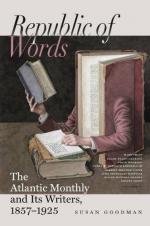CHAPTER X.
CONCLUSION.
This is the end of my story. But, like all stories, it requires that some satisfaction should be given to the reader in regard to the dramatic proprieties. We have our several heroes to dispose of. Phelim Murray and Hugh Riley, who had both been arrested by the Council to satisfy public opinion as to their complicity in the plot for the escape, were both honorably discharged,—I suppose being found entirely innocent! Roger Skreene swore himself black and blue, as the phrase is, that he had not the least suspicion of the business in which he was engaged; and so he was acquitted! I am also glad to be able to say that our gallant Cornet Murray, in the winding-up of this business, was promoted by the Council to a captaincy of cavalry, and put in command of Christiana Fort and its neighborhood, to keep that formidable Quaker, William Penn, at a respectful distance. It would gratify me still more, if I could find warrant to add, that the Cornet enjoyed himself, and married the lady of his choice, with whom he has, unknown to us, been violently in love during these adventures, and that they lived happily together for many years. I hope this was so,—although the chronicle does not allow one to affirm it,—it being but a proper conclusion to such a romance as I have plucked out of our history.
And so I have traced the tradition of the Cave to the end. What I have been able to certify furnishes the means of a shrewd estimate of the average amount of truth which popular traditions generally contain. There is always a fact at the bottom, lying under a superstructure of fiction,—truth enough to make the pursuit worth following. Talbot did not live in the Cave, but fled there occasionally for concealment. He had no hawks with him, but bred them in his own mews on the Elk River. The birds seen in after times were some of this stock, and not the solitary pair they were supposed to be. I dare say an expert naturalist would find many specimens of the same breed now in that region. But let us not be too critical on the tradition, which has led us into a quest through which I have been able to supply what I hope will be found to be a pleasant insight into that little world of action and passion,—with its people, its pursuits, and its gossips,—that, more than one hundred and seventy years ago, inhabited the beautiful banks of St. Mary’s River, and wove the web of our early Maryland history.
POSTSCRIPT.
I have another link in the chain of Talbot’s history, furnished me by a friend in Virginia. It comes since I have completed my narrative, and very accurately confirms the conjecture of Chalmers, quoted in the note of “The Landholder’s Assistant.” “As for Colonel Talbot, he was conveyed for trial to Virginia, from whence he made his escape, and, after being retaken, and, I believe, tried and convicted, was finally




